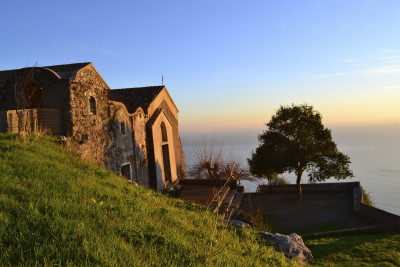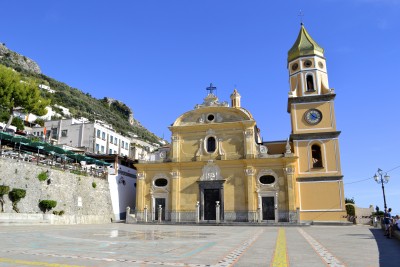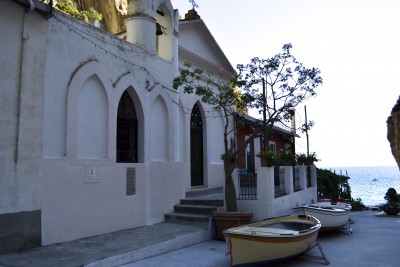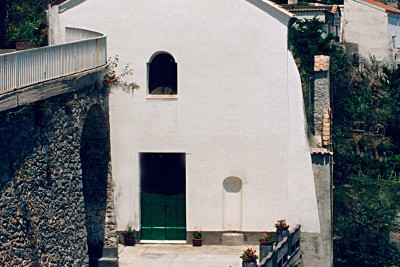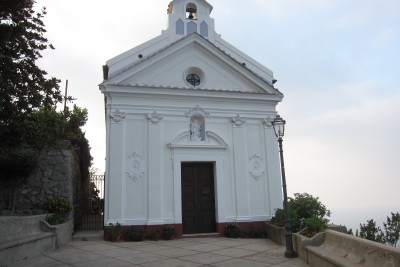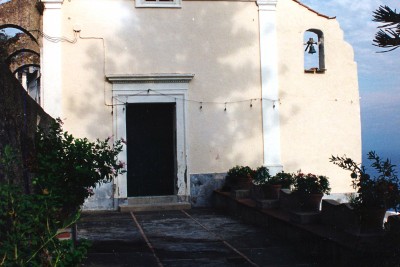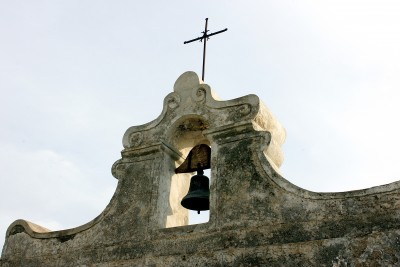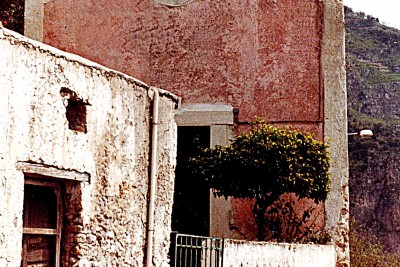San Luca l'Evangelista
This Romanesque-style church is designed on a Latin cross plan with three naves


The Church of St. Luke the Evangelist is located on the upper part of town, on the Praiano side. When there is no mist, there is a view from the church square all the coast all the way to Calabria. The facade of the church is simple and straightforward. Above the main door is a central window and an eighteenth-century majolica panel depicting St. Luke. While initially, the church was smaller and had a different form, today’s Romanesque-style church is designed on a Latin cross plan and has three naves. Inscriptions found on the original floor, dated 1537 and 1587, dates the current form to the beginning of the XVI century. A document, dated October 3, 1562, states that: "In this church all the people of Praiano and Vettica met to elect their mayors." In the mid-1500s, the church of San Luca replaced that of San Giovanni as the largest on the Praiano side of town. As the years passed the town changed its patron saint, from San Giovanni (St John) to San Luca, or St. Luke the Evangelist. In 1700, by decree of the Sacred Congregation of Rites in Rome, St. Luke was officially declared patron saint of Praiano. In the XVIII century, stucco work and decorations were added to the facade. In 1790 a terracotta tiled floor of the Neapolitan school was added.


*The church has thirteen altars, including: •the altar in the main nave, dedicated to St. Luke, made of marble with two "putti " at the top, decorated with leaves, flowers, and birds.

To his right (sea side), the Chapel of the Rosary has a painting of the Madonna of the Rosary with St. Dominic and St. Catherine, attributed to the artist Padovano de Montorio and dated 1582. •the marble altar of St. Raphael, with a painting depicting “Archangel with Tobia", dating from around the end of 1700; •a marble altar in a chapel adorned with stucco has a painting depicting the Immaculate Conception. The work is attributed to painter Silvestro Buono, who worked in Naples towards the end of 1500. •the marble altar of the Crucifix and the dead Christ, with two wooden sculptures - Christ from the mid-1800s and a Crucifix by the Neapolitan sculptor Lorenzo Cerasuolo (1773).
•the marble altar dedicated to Saint Luca, with the "Circumcision" of Jesus, a painting on wood attributed to the painter Gian Bernardo Lama (1565/70).
 Above the altar of the Chapel of Our Lady of Mount Carmel there is a painting on wood representing the Virgin Mary of Mount Carmel, also attributed to Gian Bernardo Lama (around 1560). The church has Neapolitan school two pipe organs (the largest one from 1755) and statues in wood, papier mâché, and silver, including a statue of St. Luke, in silver and gold from the first half of 1600. The church is flanked by a square-shaped bell tower built in 1500. The clock in the middle of the bell tower was built in Naples in 1872. San Luca is celebrated three times a year, on October 18th, on the Monday after Easter and the first Sunday of July.
Above the altar of the Chapel of Our Lady of Mount Carmel there is a painting on wood representing the Virgin Mary of Mount Carmel, also attributed to Gian Bernardo Lama (around 1560). The church has Neapolitan school two pipe organs (the largest one from 1755) and statues in wood, papier mâché, and silver, including a statue of St. Luke, in silver and gold from the first half of 1600. The church is flanked by a square-shaped bell tower built in 1500. The clock in the middle of the bell tower was built in Naples in 1872. San Luca is celebrated three times a year, on October 18th, on the Monday after Easter and the first Sunday of July.

